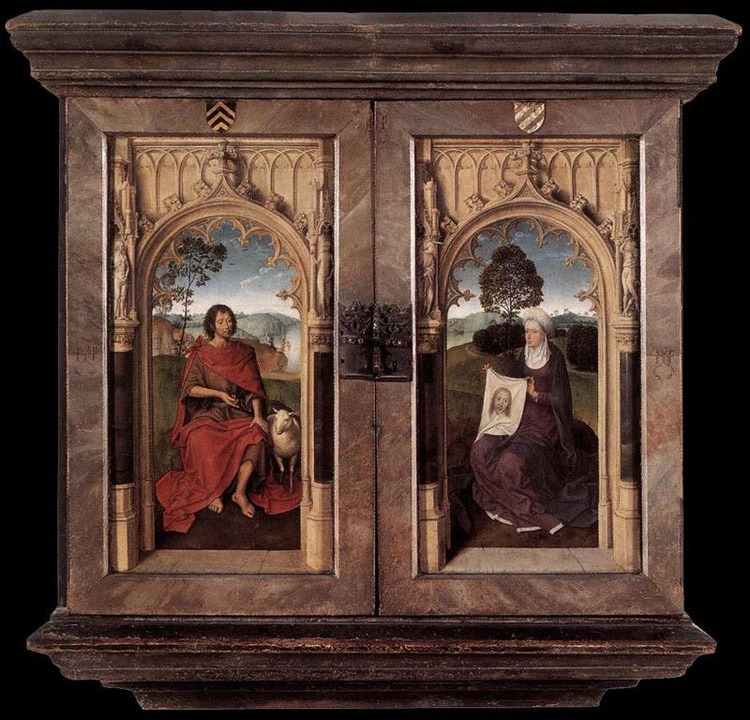
Hans Memling, Triptych of Jan Floreins


1479
Oil on oak panel
Open state: 106.6 x 37.4 in. (271 x 95 cm)
Closed state, each wing: 19 x 10 in. (48 x 25 cm)
Memlingmuseum, Sint-Janshospitaal, Bruges
The left panel of the open state uses the iconography introduced by Bridget of Sweden: While St. Joseph stands nearby with a candle Mary kneels before the naked child lying on the skirt of her dress on the floor (although Bridget had him on "the earth"). Typically for the 15th century, the setting is a stable and there is no reference to a cave.
In the central panel the naked child is adored by the oldest of the three Magi, one of whom is represented as an African, a device that became common in this century. The donor stands at left, and other visitors are visible left and right.
The right panel has a slimmed-down adaptation of the usual iconograpy of the Presentation in the Temple. The still naked child is surrounded by only Mary, Simeon, and Anna; St. Joseph stands in the background. There are no doves, Mary brings no companions, and only a thin candle at the right references the medieval Candlemas feast and Simeon's remark that Jesus is "A light to the revelation of the Gentiles, and the glory of thy people Israel" (Luke 2:32).
As for the closed state, according to the Web Gallery of Art, it shows St. John the Baptist and St. Veronica "seated before a rocky landscape that continues across both panels, with a broad river in the background. This is the Jordan, and in the distance we see a tiny representation of the Baptism of Christ. The white sculptures on either side of each arch depict Adam and Eve before the Fall (left wing) and their expulsion from the Garden of Eden (right wing) – the events that gave rise to the need for Redemption through the Incarnation (represented by the open triptych)."